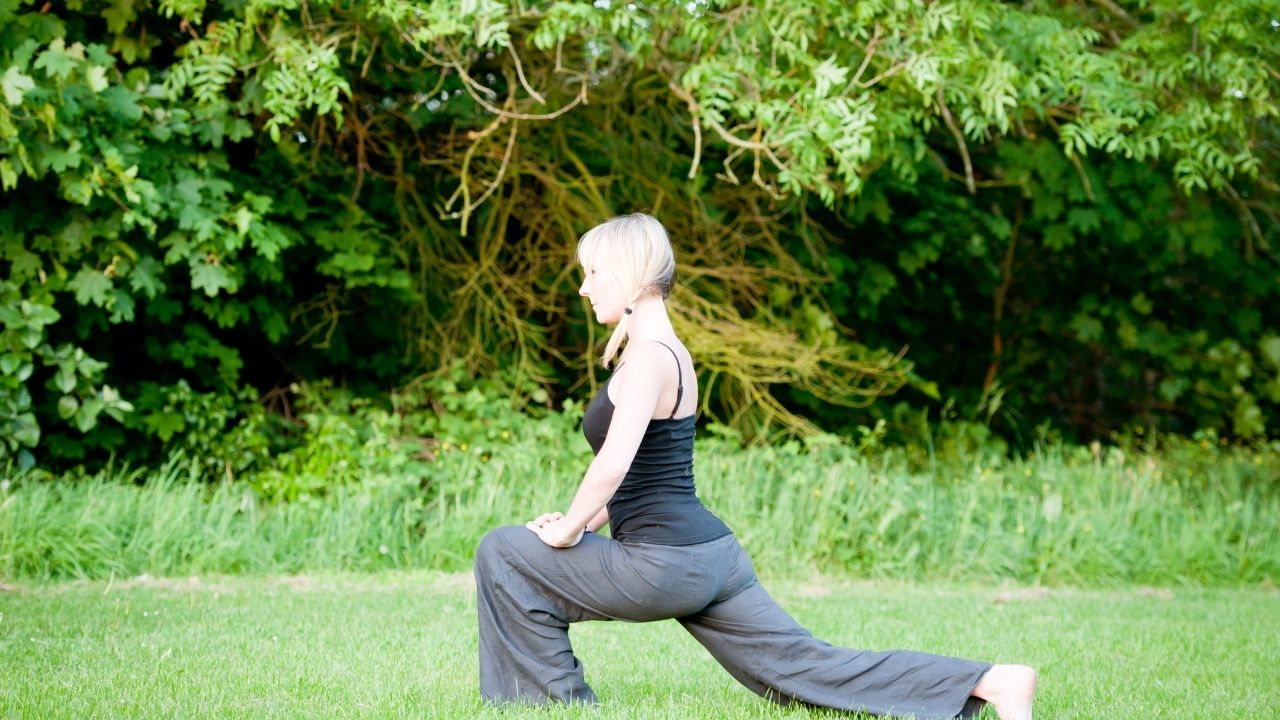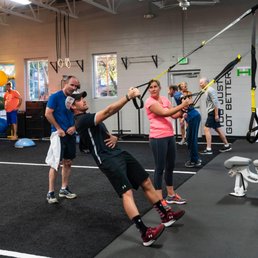
Your body needs some time to heal from the strains and stresses of your training session. The fibroblasts, which are the cells that repair and maintain the damage from the exercise, will be active during this time. It's important to allow your muscles time to heal. However, it's equally important not to overuse muscle tissue you've just worked out. Try to complete as many tasks possible in your downtime.
It's crucial to observe how your body responds during your recovery from a workout. Do you experience muscle soreness that lasts for more than three or four days? This is a sign that your workout recovery should be increased. Your recovery plan will need to change as you gain strength, lose more body fat and become more fit. Remember that your ideal workout recovery program will vary over weeks, months and years. These are some tips that will help you optimize your recovery.

A proper post-workout recovery program can be beneficial for anyone. It will vary for different types or ages. Teenagers, young adults, and those with lower fitness levels may require more time to recover from a workout. Also, those who are just starting to engage in physical activities or aren't in good health may need more recovery time after exercise. A person who is fit needs more time to recover from an injury than someone who's in good shape.
A good post-workout recovery plan starts with a proper warm up, mobility routine, stretching, and stretching. The key to speeding up recovery is to lower your heart beat to a comfortable level. It will also increase blood circulation. It is possible to achieve this through static stretching, yoga or foam rolling. Epsom salt baths can also be a great option after a hard workout.
Post-workout recovery programs should focus on the right type of recovery. By ensuring that you consume enough calories and protein, you can prevent your body from cramping and preventing overtraining. This can also help your muscles recover. Take a quick break from your workout to eat a healthy lunch. This will maximize the workout's benefits. A healthy meal will give you energy to continue your workouts.

Post-workout recovery programs should include moderate physical activity as well as a healthy diet. It's important to get as much protein and vitamin D as possible, and to do so, you should avoid working the same muscle group twice. It is important that you take the time to stretch and do yoga. You should not make your muscles work harder than they already are during these days.
FAQ
Why do we need to have a healthy lifestyle?
Healthy lifestyles lead to happier and longer lives. A healthy diet, regular exercise and good sleep habits will prevent the development of diseases such as heart disease, stroke, cancer, diabetes, and Alzheimer's.
A healthy lifestyle can also help improve mental health and make it easier to deal with daily stressors. A healthy lifestyle can also help you feel and look younger.
What is the difference of a virus from a bacteria?
A virus can be described as a microscopic organism that cannot reproduce in another cell. A bacterium can be described as a single-celled organism which reproduces by splitting in two. Viruses measure only 20 nanometers in diameter, but bacteria is up to 1 millimeter in size.
Viruses are spread via contact with infected bodily liquids such as urine, saliva, semen and vaginal secretions. Bacteria are usually spread through direct contact with contaminated objects or surfaces.
Viruses can get into our bodies through cuts and scrapes on the skin, bites, and other injuries. They can also be transmitted through the eyes, nose, mouth, ears, rectum, and anus.
Bacteria can be introduced to our bodies by cuts, scrapes or burns. They may also be introduced into our bodies through food and water as well as soil, dirt, dust, and animals.
Viruses and bacteria both cause illness. But viruses can't multiply within their hosts. Viral infections can only cause diseases in living cells.
Bacteria may spread to other people and cause sickness. They can infiltrate other parts of the body. That's why we need antibiotics to kill them.
What lifestyle is most healthy?
A healthy lifestyle means eating healthy foods, exercising regularly, sleeping well, and avoiding stress. This will ensure that you live a long healthy life.
It's easy to start small with your exercise and diet. To lose weight, you can start walking for 30 mins each day. For more activity, you can try swimming or dancing. A Fitbit or Strava online program that tracks your activity can be joined.
Is being cold bad for your immune system?
Being cold gives you a weaker immune system because when you are cold, your body produces less white blood cells which fight infections. Cold can also make you feel better as your body releases endorphins to your brain, which reduce pain.
Improve immunity with herbs and supplements?
Herbs and natural remedies can be used to boost immune function. You can use ginger, garlic, echinacea oregano oil and vitamin C as examples.
These herbal remedies should not be used in place of conventional medical treatment. These herbal remedies can cause nausea, vomiting, stomach cramps or dizziness.
What is the difference between calories and kilocalories in food?
Calories measure the energy content of food. Calories are the unit of measurement. One calorie is the amount of energy required to heat one gram water one degree Celsius.
Kilocalories refer to calories in another term. Kilocalories measure in thousandths a calorie. 1000 calories is one kilocalorie.
Statistics
- nutrients.[17]X Research sourceWhole grains to try include: 100% whole wheat pasta and bread, brown rice, whole grain oats, farro, millet, quinoa, and barley. (wikihow.com)
- According to the 2020 Dietary Guidelines for Americans, a balanced diet high in fruits and vegetables, lean protein, low-fat dairy and whole grains is needed for optimal energy. (mayoclinichealthsystem.org)
- WHO recommends consuming less than 5% of total energy intake for additional health benefits. (who.int)
- This article received 11 testimonials and 86% of readers who voted found it helpful, earning it our reader-approved status. (wikihow.com)
External Links
How To
What does the term "vitamins" mean?
Vitamins are organic compounds naturally found in food. Vitamins aid us in absorbing nutrients from the food we eat. Vitamins cannot come from the body so food must provide them.
There are two types vitamins: water soluble or fat soluble. Water-soluble vitamins dissolve in water easily. Vitamin C,B1(thiamine), B2 (2riboflavin), and B3 (3niacin), as well as vitamin C,B1, B2 (riboflavin), and B3 (niacin), vitamin B6 (pyridoxine), vitamin folic acid (biotin), pantothenic, and choline are examples. Fat-soluble vitamins can be stored in the liver or in fatty tissue. Vitamin D, E, K and A are some examples.
Vitamins can be classified by their biological activity. There are eight major vitamin groups:
-
A - Vital for normal growth and maintaining good health.
-
C - vital for proper nerve function, and energy production.
-
D - essential for healthy bones, teeth, and gums.
-
E - Required for good vision & reproduction
-
K - essential for healthy muscles, nerves, and bones.
-
P - Essential for strong bones and teeth.
-
Q - aids digestion and absorption of iron.
-
R - Required for red blood cell production
The recommended daily allowance of vitamins (RDA), varies according to age, gender, physical condition, and other factors. RDA values are set by the U.S. Food and Drug Administration (FDA).
For adults over 19 years, the RDA is 400 mg per day for vitamin A. For fetal development, pregnant women need 600 mg per day. Children ages 1-8 require 900 micrograms per day. Infants below one year old require 700mg per day. But, between 9 months to 12 months, the amount drops to 500mg per day.
Children aged 1-18 years need 800 micrograms daily, while children overweight require 1000 micrograms per days. Children who are severely obese or underweight will need 1200 micrograms each day.
Children aged 4-8 years old who have been diagnosed as having anemia require 2200 micrograms of vitamin C per day.
2000 micrograms daily is required for adults over 50 to maintain their general health. Because of their higher nutrient needs, women who are pregnant or nursing need 3000 mg per day.
1500 micrograms is the recommended daily intake for adults aged 70+, who lose approximately 10% of muscle each year.
Women who are pregnant or lactating need more than the RDA. Pregnant women need 4000 micrograms per dayduring pregnancy and 2500 micrograms per day after delivery. Breastfeeding mothers require 5000 micrograms daily when breast milk production is occurring.